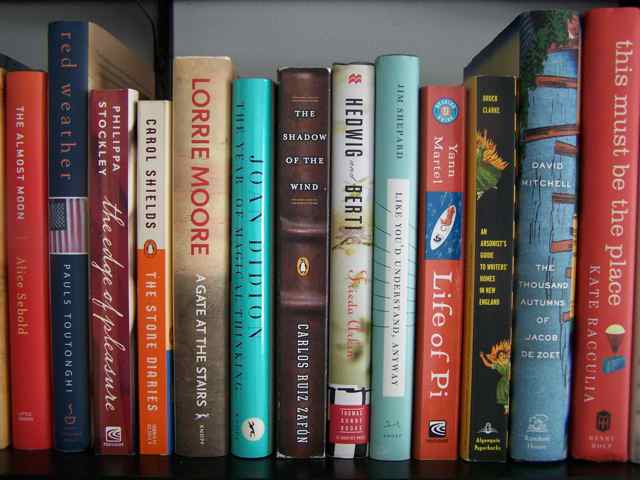 Behind the Beautiful Forevers by Katherine Boo surprised me by how it was written. The author, a journalist, immerses herself in the lives of a small number of residents of the vast slum outside of the Mumbai airport in Maharashtra, India, known as Annawadi. Not a slum like an American one, with boarded-up windows and broken plumbing, but more like a homeless encampment, only huge – made up of makeshift tents and shanties built from scavenged construction materials.
Behind the Beautiful Forevers by Katherine Boo surprised me by how it was written. The author, a journalist, immerses herself in the lives of a small number of residents of the vast slum outside of the Mumbai airport in Maharashtra, India, known as Annawadi. Not a slum like an American one, with boarded-up windows and broken plumbing, but more like a homeless encampment, only huge – made up of makeshift tents and shanties built from scavenged construction materials.
I had read that this work of narrative nonfiction “reads like fiction”, and was dubious (as I am whenever I hear this claim.) Nonfiction writers don’t have the freedom that fiction writers do to construct a narrative; they have to stick to facts, a restriction that novelists don’t have to worry about. So I have found, generally, that no matter how artfully it’s written, a work of nonfiction can’t transcend and transport a reader the way a novel can. A good novel can make you feel, as a reader, that you have truly grasped the essence of something, if only fleetingly. Behind the Beautiful Forevers, though, does actually read like fiction, though, at least for me – humanizing a group of people so poor, so far below so-called social safety nets that they form what the author calls an “undercity,” and forging a human connection to them.
The author doesn’t appear anywhere in the book; Behind the Beautiful Forevers is an attempt to immerse readers in the lives of an impoverished fringe population, one of many whose residents are missing out on India’s economic rise. I thought the author did this very well, but with Behind the Beautiful Forevers, my method of coming to a book without knowing much about it in advance backfired on me. I kept wondering distractedly how the author could possibly know what this or that person was thinking or the detailed conversations that were relayed. An author’s note at the end explains how she knew what everyone thought and felt and said from hundreds of interviews and recorded video statements that she had interpreted and translated; this information would have been better had it come at the beginning.
There are no points of view other than those of the residents of Annawadi in the book. The author is presenting a snapshot of a single, small segment of society; she doesn’t attempt to balance the facts as Annawadians see them with statements or objections from others. The appalling, chronic corruption in Mumbai daily life detailed in Behind the Beautiful Forevers seemed incredible to me, but is apparently inextricably woven into the fabric of society there. The graft and injustice at this level of society as described in this book is sickening, and the problems of Annawadi residents seemed insurmountable.
I read Behind the Beautiful Forevers with a library book club; many in the group found too bleak and depressing to be really thought-provoking, maybe because the situation of the Annawadi residents was so hopeless and so foreign that it was hard to feel a strong connection. Click over to our book club blog to see some readers’ comments.
a

Onto my tbr this goes! I do like narrative nonfiction. Thank you.
Hope you like it! It’ll be another review to write, though! 😉
I’ve been thinking of reading this one, more so now you’ve said the author doesn’t include herself and the POV is the residents’. I tend to lean towards unbiased work, but for a subject like this getting the one POV must make for detail and a truthful, gritty, picture.
I loved this book with my whole heart. Sure, it was bleak but it was also beautiful 🙂
My response was exactly like yours. I loved the book and was very impressed that she could write so creatively while being true to her facts. And yes her comments at the end, which I discovered when I was halfway through, really helped. Overall, I liked her “total immersion” approach. We see opposing viewpoints all too often. The book was bleak at times, but so real and so beautiful anyway. I urge anyone who hasn’t read this book to do so.
This book has been on my reading list for awhile.The bleakness of it doesn’t bother me. Great post.
Good. It is an excellent book.
I’ve been meaning to read it for a while, so I was glad when it was picked to be the book club selection!
Thanks for your comments! I think the immersion approach was a good way to put readers right into the lives of the Annawadi residents, even though they were so bleak; you could feel the presence of hope.
I thought this was an amazing book on so many levels – and yes, sometimes I had to remind myself it was not fiction. Very moving story.